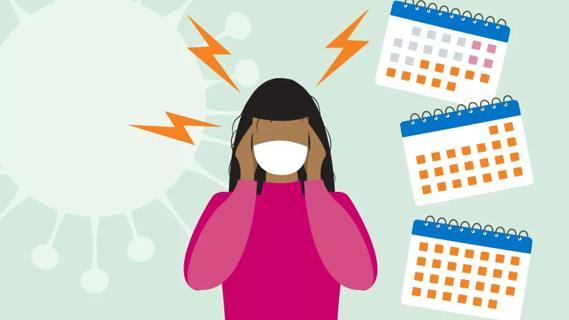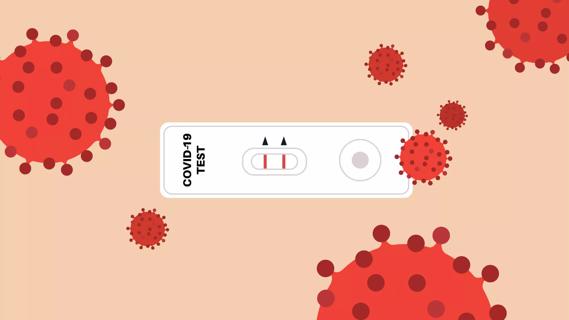How to choose your mask wisely + keep it clean

If you’re just running into the grocery store, wearing a cloth face mask for a few minutes isn’t a huge inconvenience for most people. But if you work outside or go to work or school in a building that isn’t air conditioned, adding a mask to the equation can crank up the discomfort level during the sweltering summer months.
Advertisement
Cleveland Clinic is a non-profit academic medical center. Advertising on our site helps support our mission. We do not endorse non-Cleveland Clinic products or services. Policy
“Wearing a mask over your nose and mouth in hot weather is certainly uncomfortable, but it’s quite necessary if you’re going to be around other people outside of your household,” explains internal medicine physician Janet Morgan, MD.
To prevent the spread of COVID-19, the Centers for Disease Control and Prevention recommends wearing cloth face masks when you’re in public places — especially when it’s hard to stay 6 feet away from other people. (However, if you have a medical condition that causes trouble breathing or if you aren’t able to remove a mask without help, it’s not recommended that you wear one.)
Wearing a cloth mask when it’s hot can feel stuffy and humid, but for most people it’s generally not dangerous to your health, Dr. Morgan says. However, being in very hot temperatures for an extended period of time — mask or not — can put you at risk for heat-related illness such as heat exhaustion, dehydration or, in extreme situations, heat stroke. (If you’re prone to heat exhaustion, check with your provider first.)
If possible, avoid long periods of direct sun exposure if you’re outdoors, and avoid heavy exertion. If at any point you feel dizzy, nauseous, lightheaded, confused, faint or breathless, it’s time to get out of the heat.
Advertisement
To make wearing a mask more comfortable when it’s hot, keep these tips in mind:
Don’t forget to wash your masks after each use, since some germs thrive in warm, damp conditions like those created by a sweaty mask.
The CDC recommends washing your masks along with your regular laundry using detergent and the warmest appropriate water setting, or by hand with a bleach solution. Dry them completely in your dryer or by laying them flat, preferably in direct sunlight.
Advertisement
Learn more about our editorial process.
Advertisement

The short answer: It’s complicated, but the basic care precautions still prevail, like washing your hands and isolating if you’re sick

They can feel like a typical headache or a migraine headache, but the pain can last for weeks to months

Any large social gathering — from a family birthday party to an indoor music concert — has the potential to spread serious infection

It’s important to connect with a healthcare provider, get quality sleep and balance your activities with your energy levels

Just like the flu, COVID-19 will continue to evolve every year

The duration varies, but symptoms can linger for a few days up to a couple weeks or more

Vaccination is best for prevention, but if you get sick with COVID-19, treatments are available

The virus lives best in humans, but it can last on hard surfaces, like doorknobs and railings

Type 2 diabetes isn’t inevitable with these dietary changes

Applying a hot or cold compress can help with pain